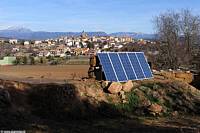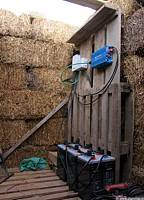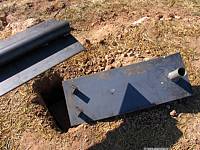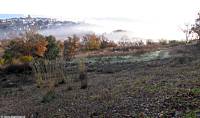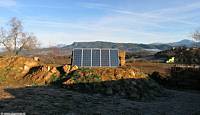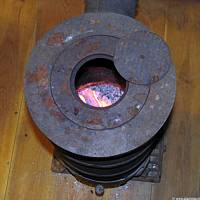|
|
Nature
Switched On
in the Pyrenees the first 10 years |
|
|
|
introduction |
2009 December 6 to 11
And then there was light, first sun light then electric light. We placed the panels away from the garden house for
aesthetic and safety reasons and had to install extra
thick electric cables to compensate the voltage loss due to the
distance. The panels were installed on
the elevation of the
terrain created in last July to get some more sun. These days,
approaching the shortest day of the year, the panels receive direct
sunlight until 2 o'clock; not the best but acceptable. |
The elevation of earth and rock was covered with straw flakes to
stimulate plant growth and avoid erosion. |
|
|
Inside the ´transformer-station´
with the controller, inverter and batteries. The straw insulation
must keep the temperatures above 0ºC. 6 Dec 10:58 |
|||
| This
supporting iron plate (110x40x1cm) will be buried 40 cm in the
ground and rest on a concrete block. 16 Oct 12:11 |
|
For the support of the
solar panels I adopted an idea from our friend Alfred Jebens, which
was not only cheaper than the standard construction but also more
efficient because it permits the angle of the panels to be adapted
to the season. The local blacksmith did the job for less than
500 euro. |
|
| On of the
two supporting plates in position, anchored in concrete (5 sacks
premix and many stones added) 27 Oct 15:25 |
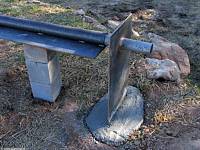 |
||
| The iron
tube (10cm diameter) is 370 cm long and accommodates 5 solar panels
(67x148cm). 27 Oct 12:36 |
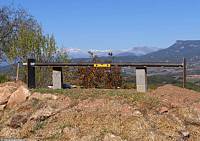 |
||
|
Fog can be an important factor for a successful solar system. In
mountainous regions they recommend to stay above 700 m to avoid
these clouds from below. We are at an altitude of 650m and sure
enough the fog is every morning approaching us more and more. But
the experience of previous years tells us that only on very few days
this fog really settles on the terrain. |
|||
| Almost
every morning we observe this fascinating spectacle of the
approaching fog. 8 Dec 9:02 |
The solar panels facing due
south. Straw bales behind the panels make them less exposed to eyes and wind. 11 Dec 9:28 |
||
|
|
|||
|
The smallest and simplest model on the market but a tremendous
heat source. 10 Dec 18:58 |
|||
|
introduction
|
|
||
